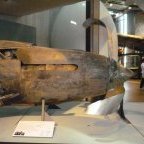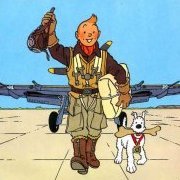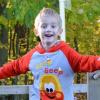Search the Community
Showing results for tags 'Spitfire Mk.IX'.
-
We have what is now the BBFM's MK356 Spitfire LF Mk.IXe as she hopefully would have looked the day before D-Day. LF meant she had the Merlin 66 fitted and was used as a ground attack plane. She was attached to the RCAF Squadron 443 Build wise, it's a superb plane. The fit is stupendous, if a little TOO tight in places and for £95 the level of detail is superb. I've modified her to an E wing although I'm sure Airfix will bring out an E wing variant in time for Christmas maybe. Lots of extra pipes etc on the engine which is a bit bare TBH and the E wing conversion kit Aerocraft. Sven at 1ManArmy was superb in helping me get a mask for her serial number and his masks for the kit in general are without equal in my opinion. Peter at Airscale as ever provided the cockpit detail. Link to the build is here. Thanks for looking and blue skies to all.
- 25 replies
-
- 45
-

-

-
Hello guys, welcome to another of my WIPs. This time, it's the turn for the Revell (Hasegawa) Spitfire Mk.IX. I will be picking up the kit tomorrow from Hobbies Morón (Buenos Aires), but I'll be starting it next year when I come back from my holidays. The model is new, with all the sprues inside their bag. Boxart photo from the seller: I'll be painting this model as a BoB Spitfire (I know, not real, but I know I'll enjoy it). Decals will come from several sources, Airfix and Xtradecals. This build will be an interim one until I manage to get a Tamiya Me 262A-1a (anyone fancy an Argentinian 262 painted as Gloster Meteor C-027 with the yellow and blue wing bands?). And maybe a Hasegawa Fw 190D-9 in 32nd. The men at Gastovic asked me to contact them after New Year, because they're covered with work as of now due to Christmas.
- 1 reply
-
- 3
-

-
- Spitfire Mk.IX
- RAF
-
(and 1 more)
Tagged with:
-
WWII RAF Airfield (DS4802) 1:48 ICM via Hannants During WWII the Allies, including the RAF operated from all manner of airfields, from rough temporary strips to fully furnished airfields with all mod cons of the time back at home in Blighty, or after taking over Luftwaffe assets that had recently been liberated. They hosted numerous aircraft types at once if necessary, plus all of the attendant crew, both groundcrew, aircrew and command staff. The Kit This is a boxed set of three kits that have been brought together to fit the theme, and includes a Supermarine Spitfire Mk.VII fighter (48062), a Spitfire Mk.IX (48061), and a set of Pilots & Ground Crew (48081) to finish off the set. All of these kits have been released previously under their own individual codes, but in this compact box they represent excellent value and an exercise in convenience too. The kits arrive in a small top opening box with ICM’s usual captive inner lid, and inside are three bags of sprues for the three kits. The Spit Mk.VII has five sprues in grey styrene, a small clear sprue and decal sheet, the Mk.IX has five in grey, one clear and a decal sheet, while the figure set is on a single sprue, each one also having their own instruction booklet and painting guide. Whilst they aren’t modern toolings they were regarded as having good detail, engraved panel lines, and in the case of the figures, realistic sculpting and fabric drape. We’ve not reviewed any of these kits previously, so let’s get on with it. Supermarine Spitfire Mk.IX (48061) This kit was first tooled in the 1990s, and time has been exceptionally kind to the moulding, with just a hint of flash here and there, and lots of excellent detail, including a full engine. The original issues used to have problems with sink-marks, but this has been almost totally removed, with just a few small depressions around the cockpit area on the outer skin. The instructions are folded A4, and quite busy, spanning just four diagrams, so take your time and make sure you have your glasses handy. Construction begins with the engine, which has a substantial number of parts with plenty of detail moulded-in, including ancillaries and the engine mounts. The cockpit sidewalls are next, adding additional details to the sides, plus the roll-over hoop behind the pilot’s head, then the fuselage is closed up around the engine, with additional parts and panels added to the front. The cockpit interior is then assembled from floor, seat, control-column, armour and aft frame, with seat adjuster, gunsight and instrument panel joining it before it is inserted into the fuselage from below. The instrument panel is well-detailed, but lacking decals for the dials, so if you’re a stickler you should source from Airscale instrument decals or see whether you can get an aftermarket panel to fit. The elevators are two parts each, and slot into the tail in the usual slot and tab manner, and these are joined by rudder that can be posed deflected if you wish. Moving forward a choice of separate open or closed canopies with two styles of rear-view mirror and aerial post are fitted over the aperture, and a single top cowling panel is glued over the engine if you’re not going to open it up, adding a fuel filler cap along the way. The single top cowling is a boon to anyone that has had their carefully filled centre seam come back to haunt them, and I’m speaking from experience here. The lower wing is a full-width part to which the cannons, ammo feed are installed in the port side, and a choice of wingtips are fitted along with the cannon fairings, upper wings and one of the two styles of gun bay door, either with the small teardrop fairing or the large one, the latter shown fitted to both decal options. Under the wings are radiator cowlings, a choice of smooth chin fairing or one with an oil-cooler intake, and separate ailerons. The main gear is made up with separate oleo scissors and single-part wheels, which you’ll need to sand a flat into if you are so minded, then there’s the big four-blade prop with separate blades that fix into the rear plate, then are covered over with the pointed spinner and a cap within that secures to the drive-shaft poking out of the front of the fuselage. Optional bombs, rockets and a conformal belly tank are supplied on the sprues to add a little variety to your model. Markings You two markings options from the decal sheet, one being the mount of a rather famous pilot and smothered in early D-Day stripes. From the box you can build one of the following: Spitfire HF.IX Sqn.Ldr. H Armstrong, OC No.611 Sqn., Biggin Hill, Feb 1942 Spitfire HF.IX Wg.Cdr. J Johnson, OC No.144 Wing, June 1944 Decals are printed by ICM’s usual partners, which is a guarantee of good registration, sharpness and colour density, with a thin gloss carrier film cut close to the printed areas. Supermarine Spitfire Mk.VII (48062) The Mk.VII was a high-altitude aircraft with a pressurised cockpit, and the model is constructed almost identically to the IX we discussed above. The sprues are identical, and the primary differences are the use of the extended wingtips, the narrow gun bay bulges and leaving the additional weapons on the sprues. Markings Just two markings options are supplied for the Mk.VII, and both are in high-altitude grey over blue. From the box you can build one of the following: Sqn.Ldr. James O’Meara, OC 131 Sqn., Colerne, March 1944 Flt.Off. W Hibbert, 124 Sqn., Bradwell Bay, June 1944 RAF Pilots & Ground Personnel 1939-45 (48081) This set provides a generous seven figures, plus a dog and a selection of equipment that would come in handy in an airfield diorama, which is exactly the point. The figures include three pilots, two of whom are discussing a run-in with the hun, the third is climbing into his cockpit with helmet and mask already in place. There are two erks included too, one carrying a jerry can, the other stood on the wing assisting a pilot. An officer is kneeling down, presumably looking at his dog, which looks a bit like a red setter, and last but not least, a WRAF carrying a satchel and folio rounds out the group. Each figure is sensibly broken down into torso, legs, arms and head, with some variation where appropriate due to the pose. The equipment includes a two-wheeled trolley containing two pressurised bottles, possibly oxy-acetylene, a work bench with what looks like a loader for creating links of ammunition for the fighters, a step-ladder, two jerry cans, and an aircraft jack that was slotted through the rear of the fuselage to raise it for alignment of the aircraft’s guns out at the butts. All the figures and equipment are shown in the instruction sheet with letter codes calling out painting options, which corresponds to a table below that gives colour names and Model Master codes. Conclusion A compact and bijou boxing that is full of modelling fun, including some impressively well-detailed Spitfires, especially for the time of their original tooling. Fix those few sink marks, and the rest should be pretty standard, offering great value at that tempting price point. Highly recommended. Available in the UK from importers H G Hannants Ltd. Review sample courtesy of
-
In another post, someone asked about what our first models were – mine, via an assist, was an Airfix Do217 (‘red stripe’ box in those days) but it prompted me to dig out an old photograph that I remembered my Dad taking. A bit of a deception of course because the writing on the back says ‘1969, over the River Tay’! The picture was taken at the family home in Dundee with the River Tay just at the bottom of the road. The models were suspended on threads from the window frame. Hats off to Dad because he must have spent a bit of time in getting the angles right – looks like a beam attack from port in progress. (Wasn’t that the year that the film ‘The Battle of Britain’ was released?). I can remember him saying ‘Achtung, Spitfeur’ but he was of that ‘war generation’, after all! However, since I am getting going on modelling again and need a theme to really push me along, I thought I would re-do an Airfix Dornier Do217E-2 and a Supermarine Spitfire Mk.IX both in flight and try to re-create the scene in the black and white photo. I do have both of these kits in the stash so firstly re-lived the ecstasy of opening the red stripe Do217 box – look at that sky blue plastic! In the spirit of these things, I put together as much of the kit as I could, just pausing to paint in the engines in black and the crew areas in what I imagined to be a reasonable ‘cockpit green’. The general fit of everything is not too good and I remembered that some time ago, I saw the previous excellent builds ‘A brace of Airfix old timer Dornier 217's ‘ by Mottlemaster, September 11, 2013 in The Obsolete Kit Group Build (photobucket images now not visible) and this really made the penny drop as to the limitations of this kit – totally ignored in 1969. The ailerons had to be trimmed to be moveable and had sink marks – I’ll leave this as ‘battle damage’. The dorsal turret was a very tight fit in its mountings so much sanding and filing was required before I could rotate it easily without bending the protruding machine gun. So, when it came to putting the flight deck together, I raised it in the fuselage by adding in a couple of layers of corrugated cardboard – this Do217 had the thickest armour plating in the whole Luftwaffe! I positioned the seats slightly differently to bring the control column and instrument panel within reach of the pilot and to allow the seats to come up into the canopy space. Unfortunately, the pilot ended up sitting slightly ‘side-saddle’ as I wasn’t keen on taking a file to the insides of his legs, poor guy. Now that the crew is going to be visible, I gave them brown overalls and black boots (with a shine), varying the brown on helmets and life preservers. The detail of the crew is basic but I had a go at putting some silver on their large round goggles – hoping it will all look OK behind the canopies. Cut out the instrument panel fascia from the Instructions and fixed with PVA glue. Getting the propellers in place was a bit of a nightmare because I was determined that they were going to be able to rotate when subjected to a breeze when finished – they would not press together satisfactorily and the final fit was wobbly. The engine cowlings would not assemble to the nacelles without a great deal of sanding/filing down and all of the exhaust/flame dampers required a large dot of plastic removed from the top surface as well as flash removed. Some filing back of one side of the engine nacelles was also required to get a decent fit. The main undercarriage all went together and remained ‘retractable’ but the port wheel has an off-centre axle hole on one side and will need to be filled and re-drilled later. There are no bracing struts on this undercarriage so leaving them moveable will be dodgy unless I come up with a method of bracing. The undercarriage doors seemed to fit well once a little flash was removed so the idea sprung into my mind that I would try to have them ‘hinged’ in some manner so that the undercarriage could be stowed and the doors shut for ‘flight mode’. Grey duct tape was available and I was able to cut thin strips with my wallpaper scissors. The tailwheel doors will have to go flat against the formed well to be flush with the rear fuselage but I initially found this to be impossible because of the thickness (albeit slight) of the duct tape ‘hinges’. A bit of filing in the hinge positions with a small square file has sorted this out. The tailwheel is not a tight fit in the rear fuselage so when the rear wheel doors are open, I’ll need to keep the tailwheel in place with a blob of blue-tac – just re-created a ‘castoring’ tailwheel. After a couple of attempts at the main undercarriage doors and a little removal of flash, I managed to insert small strips of the duct tape and press in place in the hinge tab positions. It is a bit fiddly to close the doors and set them in place flush with the undersides of the engine nacelles but it can be done – I don’t plan on demonstrating this often! I think a blob of blue tac can be used as something to close against when the doors are shut and something to ‘lock’ the main undercarriage legs in the vertical when they are open. Dry fit of wings on fuselage - looks reasonable but a bit more sanding required. On with the painting…..
- 49 replies
-
- 7
-

-
- Do217E-2
- Spitfire Mk.IX
-
(and 1 more)
Tagged with:
-
Okey-dokey...Here is AZ Model's 1948-era Egyptian Mk. IX, from the double kit which includes an Israeli version as well. For me, this has been a groundbreaking build: 1. Probably the first Spitfire since I was about 10 years old... 2. I have started using Tamiya acrylics properly, i.e. with thinner (and it hand brushes on beautifully boys...) 3. My first attempt at pin-washing with oils. What a difference! I will get better... Ok..the nuts and bolts...Tamiya Light Blue and Desert Yellow for the primary surfaces. I masked off and then rattle can sprayed Humbrol Acrylic Dark Brown. Masked off again after drying overnight and sprayed the tail section and the wing tips Humbrol Flat White. Notice there is a tone difference in the dark brown came areas? I had to best guess for some touch-ups and ended up using Vallejo Chocolate Brown with a little Desert Tan. It wasn't perfect but I liked it. It gave the model an element of "This is 1948 in the desert and we are using these old Spitfires purchased through arms dealers and we don't have the same shade of brown as the Brits..." The black stripes are decal stock, cut and measured. The radio antenna is EZ-Line and a bit of sprue. Hmm..what else...Oh yes...One flaw with this kit is the wingtips. You have to add them on. This is too bad, but I guess they have only one mould and they must use it for the Greek, Czech and other variants if this kit. One tip is to not sand or saw the ends of the wings before you put the top and bottom halves together. Do it after the whole fuselage is assembled and the tip fitting process will go more smoothly. Is that it? This was a good kit and went together fairly easily. I still need to work on my clear parts more precisely. I can mask, etc...it still looks wonky. Time will improve! I have also made the decision to buy an airbrush. I am tired of all the weird masking I need to do. Plus, how am I going to get those great Finnish, Bulgarian and Japanese camos right without it? --JDCM
- 4 replies
-
- 19
-

-
- Egyptian Spitfire AZ Models
- 1/72nd scale
-
(and 1 more)
Tagged with:
-
Stencil Decals for Spitfire Mk.IX 1:72 Eduard This set sees Eduard continue their line of stencil decals with a set for their superb new Spitfire Mk.IX kit. This is a generic set which should be suitable for all Mk.IXs. The sheet is very comprehensive and as you would expect, includes a full set of stencils for the airframe. The sheet is actually the same as that provided in the Profipack edition of the new kit, so you won't need to buy this set if you already have that particular version (good bit of Britmodeller consumer advice there) Conclusion As with their other recent sheets, these decals appear to have been printed in the Czech Republic by Eduard themselves. The sheet is well printed and details are crisp and clear. If you have one of Eduard's great new Spitfires and you have the patience to apply all of these stencils, then this sheet will provide you with a great finishing touch. Review sample courtesy of
-
- 1
-

-
- Eduard
- Spitfire Mk.IX
-
(and 1 more)
Tagged with:
-

What wing had MJ671 - French AF Spitfire Mk.IX in Indochina
Basilisk posted a topic in Aircraft WWII
Would anyone have a clue what wing configuration these Spitfires had (particularly MJ671 closer to the camera)? Is it a c or e wing and is it full span or clipped? difficult to see on this picture. Are bombs only carried on e wings? The French flew the Spitfire Mk.IX with c and e wings full span and clipped. My guess is a clipped e wing. Any suggestions are much appreciated. Thanks, Peter






